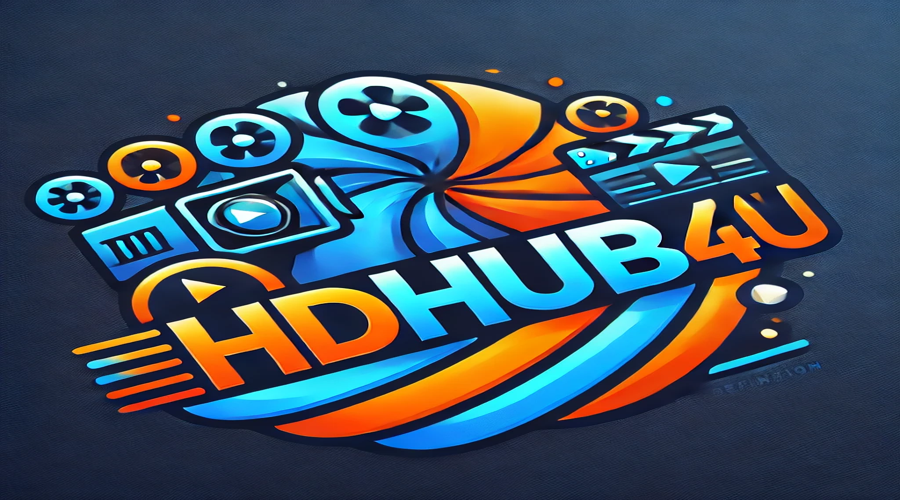Exploring Hd Hub4u.com: Your Gateway To High-Definition Experiences
Imagine a place where visual clarity and sound come together to create something truly special. This is the promise of high-definition content, and a name like hd hub4u.com really suggests a central spot for all of that. People are always looking for better ways to experience their favorite shows, movies, and even games, so a resource like this could be quite interesting. It seems to promise a world where every detail matters.
When we talk about "HD," we are really talking about a big step up in how things look on our screens, you know? It means pictures are sharper, colors are more vibrant, and everything just feels more real. This kind of quality is something many people want these days, especially with so many amazing things to watch and play. It is, in a way, about getting the most out of our displays.
This quest for better visuals has changed how we think about our devices, too. From the phones in our pockets to the big screens in our living rooms, the push for clearer pictures is everywhere. A site named hd hub4u.com, therefore, could be a very helpful spot for anyone curious about what high definition means for them, or perhaps where to find it. It sounds like a place to gather information, or maybe even content, that focuses on that crisp, clear quality.
Table of Contents
- What is HD?
- Understanding Resolution: 1080P, 2K, and 4K
- Graphics Power for High Definition
- Beyond Resolution: HDR and Immersive Viewing
- Audio for High Definition Experiences
- High Definition Content and Platforms
- Frequently Asked Questions
What is HD?
The term "HD" often pops up when we talk about screens and videos, right? It stands for something really important in the world of visual media. This means a lot for how we enjoy our digital content. It's essentially about how much detail a picture has.
Definition of HDTV
HD, or High Definition, actually refers to HDTV, which is short for High Definition Television. So, when you see a film online labeled as an "HD high-definition version," it usually means it came from an HDTV signal. This is, in a way, a mark of quality. It indicates a source that provides a clearer picture than older, standard definition broadcasts.
This kind of video signal offers a much richer viewing experience, you know? It's about seeing more of the scene, with finer lines and better color separation. Many people now expect this level of detail. It has, for instance, become the standard for most new televisions and streaming services. The difference from older formats is quite noticeable.
CEA Requirements for Ultra HD
The Consumer Electronics Association, or CEA, has some clear rules for what can be called "Ultra HD" or "Ultra HD." This is, in fact, a very important standard. They say that consumer displays and televisions must meet certain conditions to earn that label. It ensures that when you buy something marked Ultra HD, you know what to expect in terms of picture quality.
First, the screen needs to have at least eight million active pixels. This means a resolution of 3840×2160, for example. This is a lot of pixels, which translates to a very sharp image. Without changing the screen resolution, other conditions also apply. These conditions are there to make sure the "Ultra HD" tag truly means a superior viewing experience. This is, quite simply, a benchmark for visual excellence.
Understanding Resolution: 1080P, 2K, and 4K
Resolution is a big part of how clear a picture looks. It tells you how many pixels make up the image on your screen. You might hear terms like 1080P, 2K, or 4K quite often these days, and they all refer to different levels of detail. Knowing what these mean can really help you pick the right display or content. It's, in some respects, the foundation of visual quality.
1080P and HD
Right now, you'll often see resolutions like 1080P and 2160P. These two are basically the common choices for most people. 1080P is what we usually think of when we say "HD." It gives you a good, clear picture that is much better than older standard definition. For many years, this was the go-to for high-quality viewing. It is, perhaps, the most widely adopted high-definition format.
If you're watching something labeled "HD," it's very likely in 1080P. This resolution is still very popular for streaming and broadcast television. It provides a good balance between picture quality and the amount of data needed to transmit it. So, for a lot of everyday viewing, 1080P is perfectly fine. It's, in a way, a reliable standard.
4K UHD and 2160P
Then there's 4K UHD, which corresponds to 2160P. This is a step up from 1080P, offering four times the pixels. If you have a 4K television, it's really a good idea to choose content in 2160P to get the best picture. This will let you see all the extra detail your screen can show. It's, in fact, a much more immersive experience.
The difference with 4K is quite striking on a large screen. You can sit closer without seeing individual pixels, and the image looks incredibly smooth. More and more content is becoming available in 4K, making it a popular choice for home entertainment setups. It's, honestly, becoming the new benchmark for premium viewing. This is, basically, the future of visual clarity for many.
Old Movies and Resolution
One thing to keep in mind is that some older films, like Stephen Chow's "Kung Fu Hustle," might not be available in 4K. Even if you have a 4K TV, the source material might be limited to 1080P or even lower. This means the picture quality won't magically become 4K just by playing it on a 4K screen. It's, you know, about the original recording.
The resolution of the original content matters a lot. If a movie was made before 4K was common, it was probably filmed in a lower resolution. While some older films get remastered, not all do. So, you might find that some of your favorite classics still look best in 1080P, even on a top-tier display. This is, in a way, a limitation of history.
Graphics Power for High Definition
To enjoy high-definition content, your computer or device needs to have enough graphics power. This is what processes all those pixels and gets them onto your screen. Without a capable graphics processor, even the best resolution content might not look its best or play smoothly. It's, basically, the engine behind your visuals.
Integrated Graphics: Intel HD Graphics
Many computers, especially laptops and some desktop machines, come with what's called "Intel (R) HD Graphics." This literally means it's an integrated graphics chip built right into the Intel processor. This type of graphics is often quite basic. It's, in a way, just enough to get your screen working and display everyday tasks.
The performance of these integrated graphics can vary, but they are generally considered entry-level. People sometimes call them "light-up machines" because they are mostly for just getting a display to show something. For simple tasks like browsing the web or watching standard videos, they do the job. But for more demanding things, like high-resolution gaming or video editing, they might struggle. It's, you know, not built for heavy lifting.
Whether you have a laptop or a desktop makes a difference, too. Desktop computers often use UHD integrated graphics, which are also quite basic. These are designed for general use, not for pushing lots of pixels in a game or complex program. So, if you're looking for serious performance, you'll probably need something more. It's, in fact, a fundamental difference in design.
Modern Integrated Graphics: Ultra Series
However, modern integrated graphics, like those in the "ultra series" from Intel, have seen some big improvements. They offer a much better performance boost compared to older versions. This is, apparently, a noticeable step forward. These newer integrated chips can handle more demanding tasks, including some light gaming or higher resolution video playback.
Of course, these improved integrated graphics also use more power and run at higher speeds. If you're hoping for your integrated graphics to do some real work, you should really look for a laptop with good cooling. Models like the Xiaoxin Pro, ThinkBook+, or Wuwei Pro are good examples. They can manage the extra heat from these more capable chips. It's, in a way, about giving the chip room to breathe.
Dedicated Graphics: RTX 5050 and Gaming
For serious high-definition experiences, especially gaming, a dedicated graphics card is usually the way to go. Consider something like the RTX 5050, for instance. This kind of card is built specifically for processing visuals and can handle much more than integrated graphics. It's, basically, a powerhouse for graphics.
Based on tests with 25 popular games, the RTX 5050 shows solid performance across different resolutions, including 1080P, 2K, and 4K. Data from TechPowerUp's desktop graphics card hierarchy confirms this. This means you can expect smoother gameplay and better visual fidelity at higher resolutions. It's, honestly, a big difference for gamers. This is, in fact, what makes modern gaming look so good.
Beyond Resolution: HDR and Immersive Viewing
While resolution is a big part of picture quality, it's not the only thing that makes an image look great. Another important technology is HDR. This can really change how you see content, making it much more lifelike. It adds another layer of depth to your viewing experience. It's, in a way, about making the picture pop.
What is HDR?
HDR stands for High Dynamic Range. I don't think I need to explain it in super detail, but here's the simple idea. It's about making the bright parts of the screen brighter and the dark parts darker, all at the same time. This means you can see more detail in both the very light and very dark areas of an image. It's, essentially, about contrast.
Think about a scene with bright sunlight and deep shadows. Without HDR, you might lose detail in either the bright sky or the dark corners. With HDR, your screen can show both with much more clarity. This results in a picture that is much closer to what your eyes actually see in the real world. It's, in fact, a huge step towards realism.
Bringing Scenes to Life
The goal of HDR is to make the picture on your screen feel more like you are actually there. It enhances the high-light and dark details of the display picture. This makes the scene feel more immediate and present. It's, arguably, one of the biggest improvements in display technology in recent years.
When you combine high resolution with HDR, the result is truly stunning. Colors look richer, shadows have more depth, and highlights shimmer. This is why many new TVs and monitors now include HDR support. It really helps bring movies, shows, and games to life in a way that standard displays cannot. It's, quite simply, a game-changer for visual immersion.
Audio for High Definition Experiences
High-definition viewing isn't just about what you see; it's also about what you hear. Great audio can truly complete the immersive experience. If the sound isn't clear or powerful enough, even the most beautiful 4K picture can feel a little flat. It's, basically, half of the experience.
HDMI Audio Output
When you connect your computer or media player to a display, especially a TV, you'll often use an HDMI cable. This cable is very versatile because it carries both video and audio signals. So, if you're looking for a good audio experience, HDMI is usually the way to go. It's, in fact, a standard for many home entertainment setups.
Sometimes, your computer might not automatically send audio through HDMI. But there's a simple fix. You can right-click the "This PC" icon on your desktop, then go to "Manage," and then "Device Manager." There, you can right-click "Audio inputs and outputs" and scan for hardware changes. This will often make the HDMI connection show up as a new audio device. It's, you know, a common troubleshooting step.
Setting Up Audio
After scanning for hardware changes, you'll probably see a new HDMI audio output option. At this point, you can go to the speaker icon in the bottom right corner of your desktop. Click on it, and you should find that the audio output has automatically switched to your HDMI device. This means sound will now come through your TV or connected audio system. It's, basically, a quick setup.
Getting your audio set up correctly is important for enjoying high-definition content fully. Clear sound with good bass and crisp highs makes a huge difference to how engaging a movie or game feels. So, always take a moment to check your audio settings. It's, in some respects, just as important as the picture. You can learn more about audio settings on our site, and link to this page for more details on sound optimization.
High Definition Content and Platforms
With all this talk about resolutions and display technologies, it's clear that high-definition content is everywhere. From movies to apps, the push for better quality is constant. Finding the right platforms and understanding how content is delivered can really help you make the most of your devices. It's, in a way, about knowing where to look.
HD on Mobile Devices
Even on smaller screens like iPads and iPhones, high-definition content is a big deal. Apple's official apps, for instance, are universal for both devices. You'll often see a "+" symbol on the download button, indicating this. Developers might add "HD" to their app names to show it's designed for iPads or to distinguish it from iPhone-only versions. This is, basically, a way to signal optimized viewing.
This means that even on the go, you can enjoy content that looks sharp and clear. Mobile devices have come a long way in terms of display quality, making high-definition viewing possible almost anywhere. So, whether you're watching a movie or playing a game, you can expect a good visual experience. It's, honestly, quite convenient.
Community Knowledge Sharing
When you have questions about high-definition technology, or anything else, online communities can be a great resource. Platforms like Zhihu, which is a popular Chinese online question-and-answer community, started in January 2011. Its mission is to help people share knowledge, experiences, and insights. It's, in fact, a place where you can find answers to almost anything.
These platforms are built on serious, professional, and friendly community interaction. They are places where you can ask about display resolutions, graphics cards, or even how to get the best out of your new 4K TV. So, if you're ever wondering about the technical details behind hd hub4u.com or similar topics, a community like Zhihu can be very helpful. It's, basically, a hub for shared wisdom. You can explore more about Zhihu and similar platforms to expand your understanding of technology.
Frequently Asked Questions
People often have questions about high-definition content and the technology behind it. Here are some common inquiries that might come up when exploring a resource like hd hub4u.com.
What is the difference between HD and 4K UHD?
HD usually refers to 1080P resolution, which means 1920 pixels across and 1080 pixels down. 4K UHD, on the other hand, is 2160P, with 3840 pixels across and 2160 pixels down. This means 4K UHD has four times as many pixels as HD. So, it offers a much clearer and more detailed picture. It's, you know, a significant jump in quality.
Do I need a special graphics card for HD content?
For basic HD content, most modern computers with integrated graphics can handle it just fine. However, for 4K content, especially gaming or demanding video, a dedicated graphics card like an RTX 5050 will give you a much smoother and better experience. It's, basically, about having enough processing power. Newer integrated graphics can also do a decent job, but dedicated cards are often better.
What is HDR and why is it important?
HDR, or High Dynamic Range, improves the contrast and color of an image. It makes the bright parts brighter and the dark parts darker, showing more detail in both areas. This makes the picture look more realistic and immersive, closer to what your eyes see in the real world. It's, in a way, a big step up from standard dynamic range. It really brings scenes to life on your screen.

Hdhub Movie 4u: A Comprehensive Guide To The Ultimate Movie Experience

HDhub4u: The Best Free Website for Movie and Series Enthusiasts

Hdhub4u Download All Bollywood & Hollywood Movies - HAL INDIA